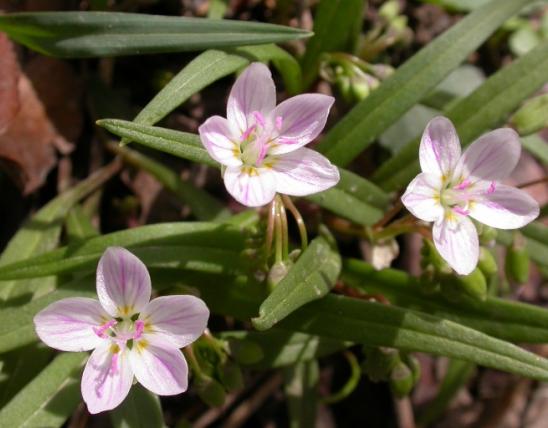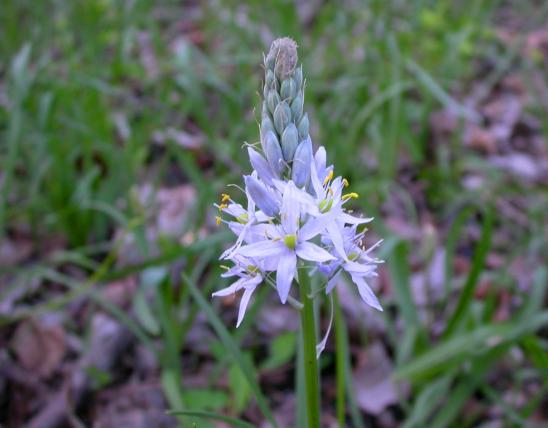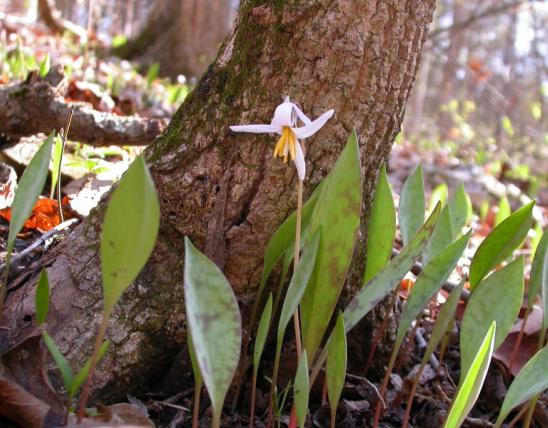
False garlic looks like a wild garlic or onion plant, but it doesn’t smell like one. The flowers are on on separate stalks arising from the same point at the top of a tall, leafless stalk; each flower has 6 tepals (petals and sepals combined) that look alike and are white, yellowish, or greenish; typically yellowish at the bases. At the top of the stem, where the flower umbel (cluster) attaches, there are two small leafy bracts. Blooms March–May; sometimes flowers again in October–November. Leaves are basal, grasslike (flattened, not hollow), and lower than the flowers. The rootstock is a bulb.
Similar species: Star of Bethlehem (Ornithogalum umbellatum) is a nonnative lookalike commonly considered a lawn weed; it also has flowers with 6 tepals, but its tepals are always bright white with a green stripe under each, and they are not as pointy as those of false garlic. Star of Bethlehem's leaves are dark green, rolled inward, with a white stripe running down the center.
Height: to about 10 inches.

Nearly statewide. Less common north of the Missouri River and apparently absent from the Mississippi Lowlands except for Crowley's Ridge.
Habitat and Conservation
Occurs in glades, ledges, prairies, stream banks, and openings of upland forests. Found on both acidic and calcareous substrates. This species is found nearly throughout the eastern United States and south to South America.
Status
Native Missouri wildflower.
The lily family used to be a large group with many diverse members, but in recent decades, botanists using DNA analysis have determined that the lily family should be divided into a number of separate families. All the members of the new amaryllis family (including false garlic) were formerly considered members of the lily family.
Human Connections
Another name for this plant is "crow poison." It is unknown whether or not this plant is actually poisonous to crows or even to humans, and it's not listed as an edible plant either. It is a good idea not to eat any part of it. Instead, enjoy it for its beauty!
False garlic is good for naturalizing in open areas such as lawns, prairie reconstructions, and rock gardens; it tolerates dry, shallow, and rocky soils. If you're interested in native wildflower gardening, make sure you get plants from reputable wildflower nurseries.
Ecosystem Connections
Many different flowers grow in our prairies, and this is one of them. At first glance, a native prairie looks like "just a lot of grass," but as this plant shows, not all are truly grasses. There can be over 200 species of plants in even a small tract of tallgrass prairie.
This is one of Missouri's earliest blooming wildflowers. As such, it is an important nectar and pollen source for numerous early-emerging bees and other insects, including one of our earliest-emerging butterflies, the falcate orangetip.































